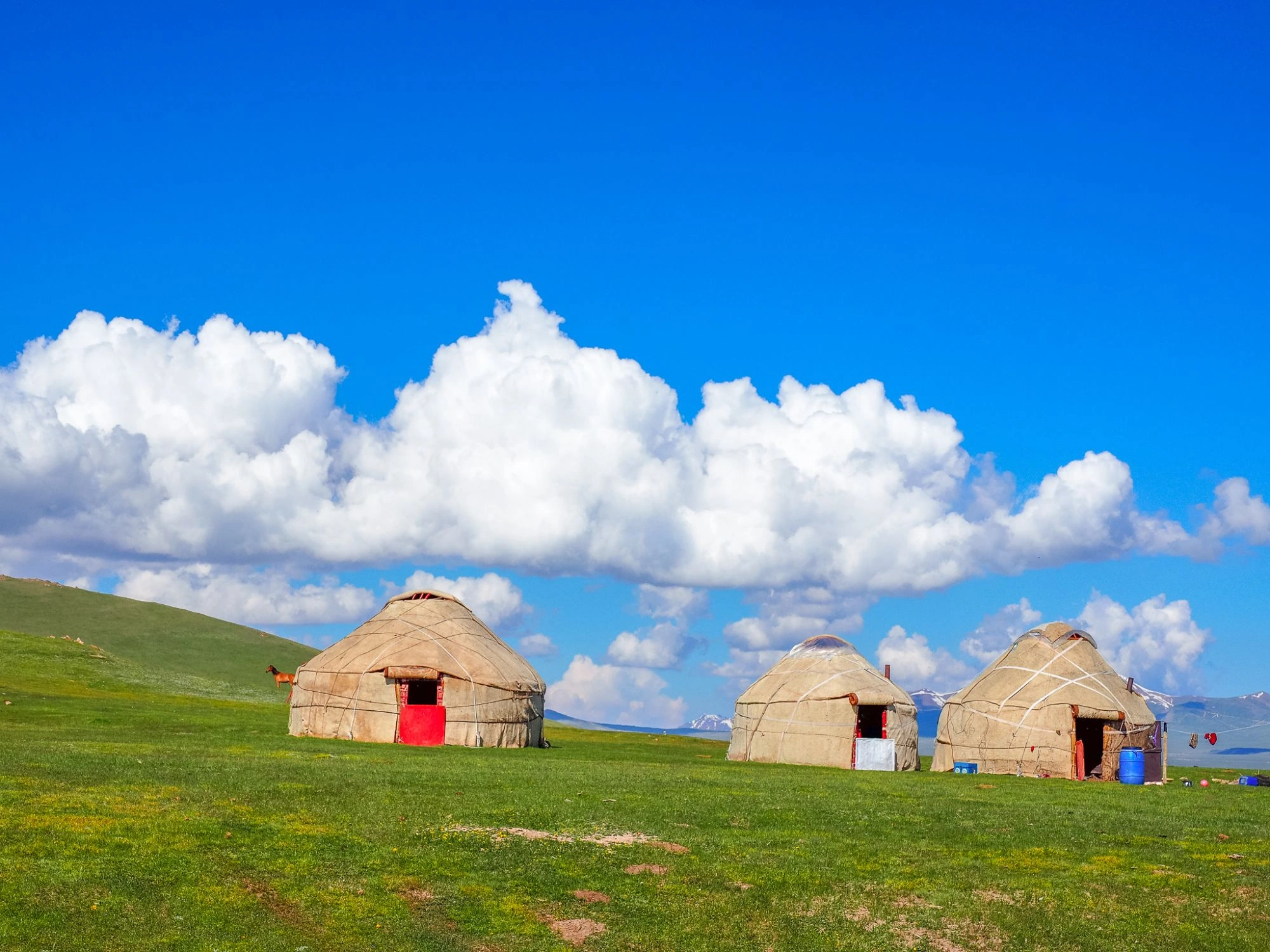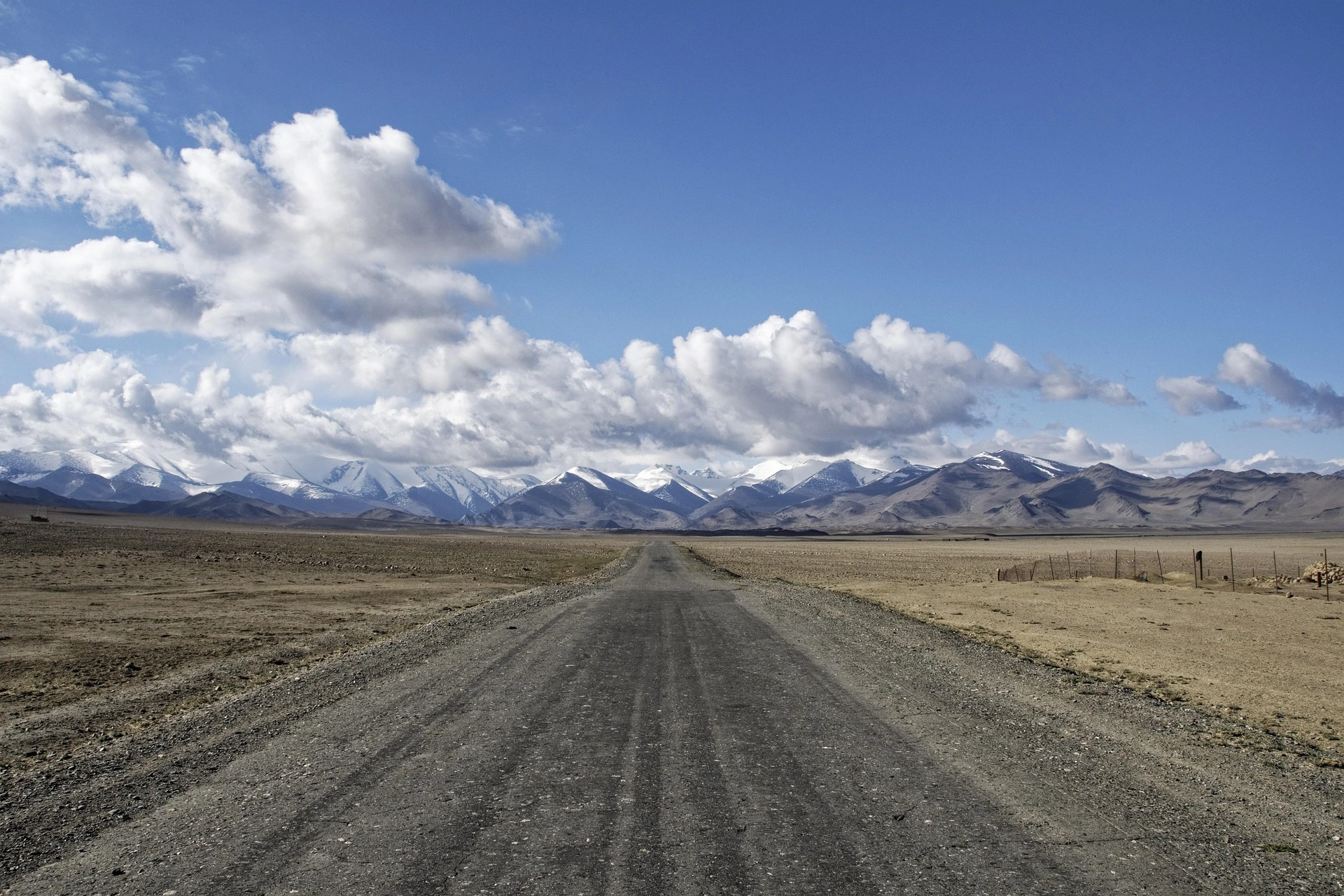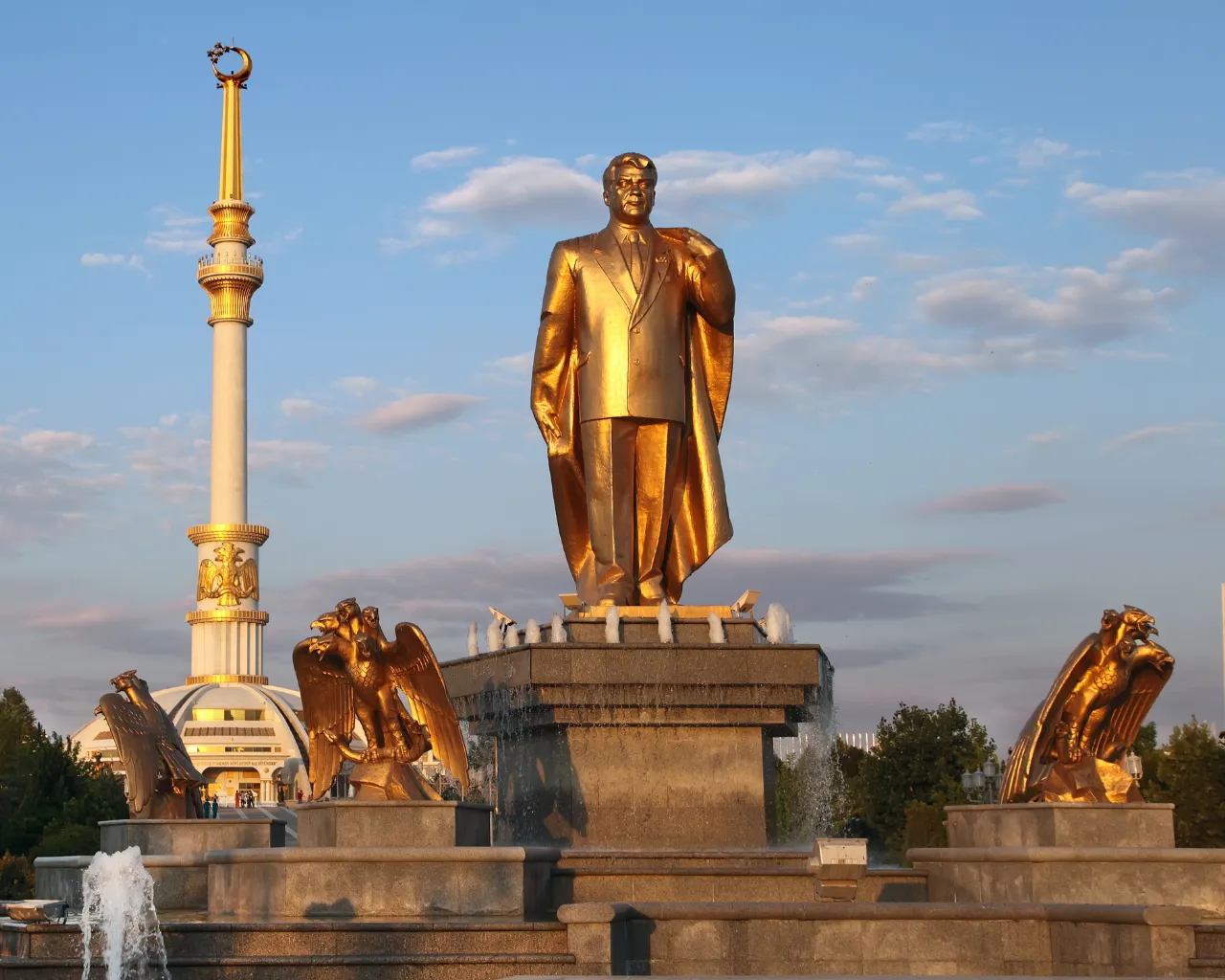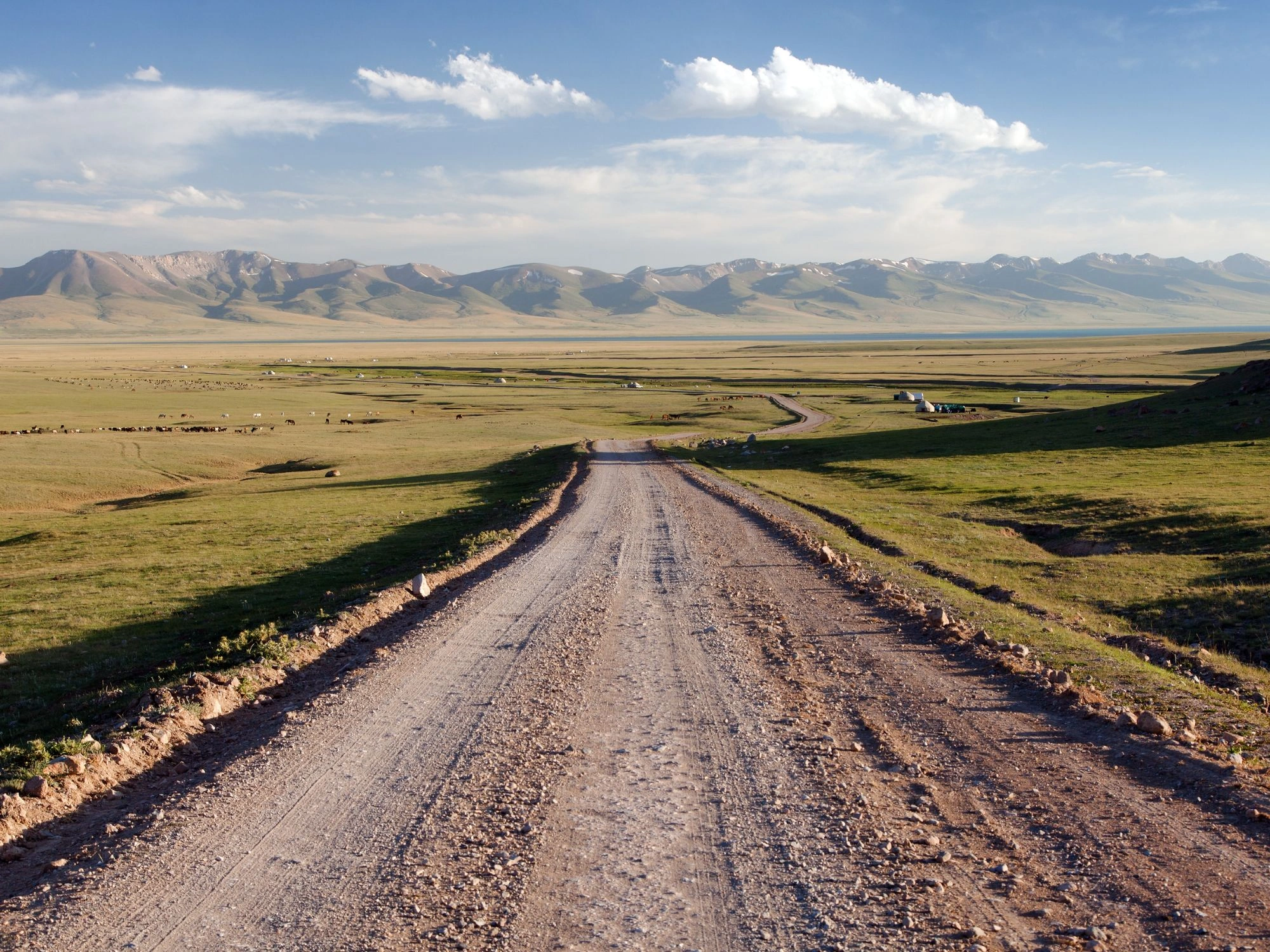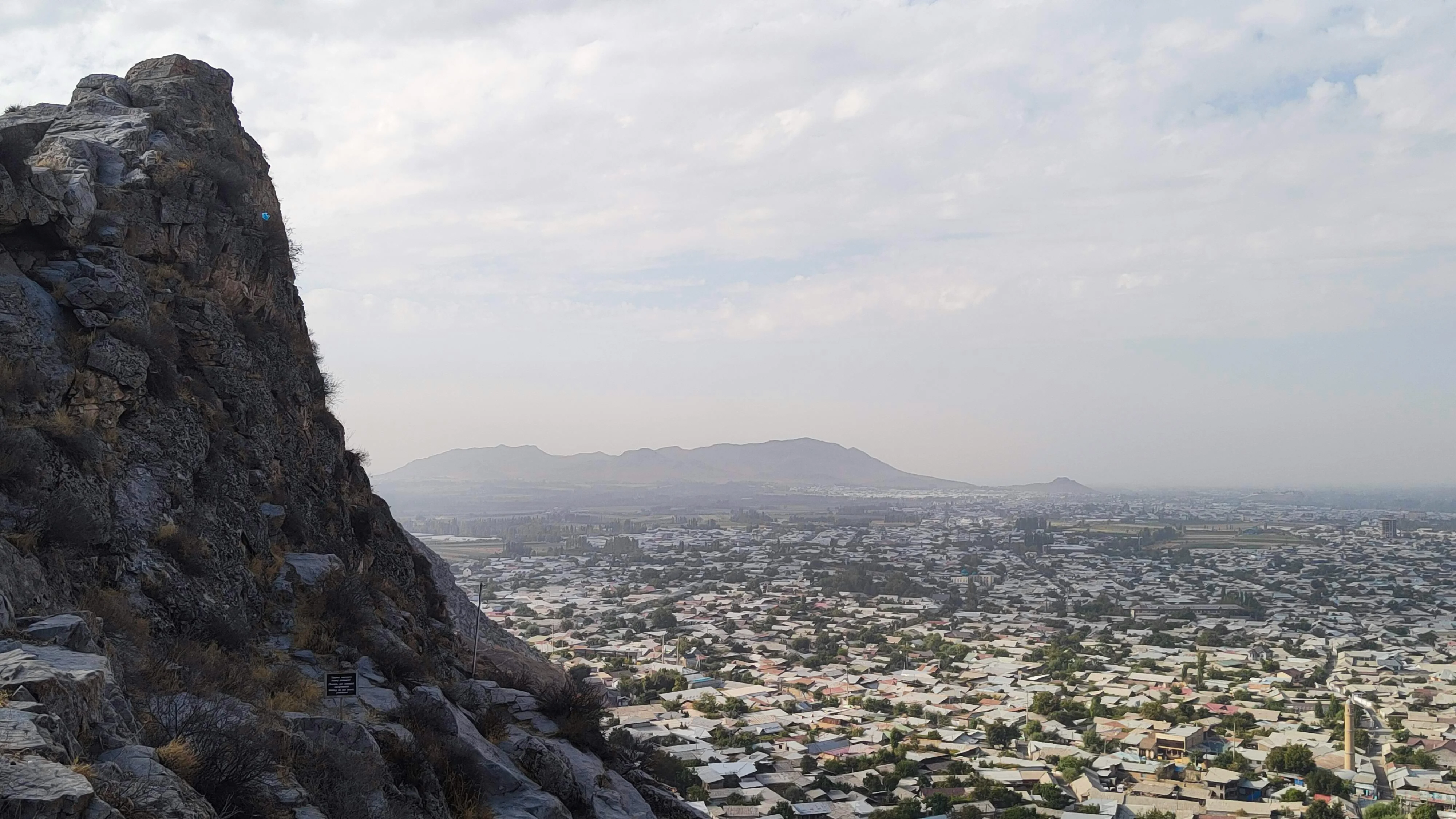Issyk-Kul Lake, Kyrgyzstan: The Pearl of the Tien Shan

Issyk-Kul Lake, Kyrgyzstan: The Pearl of the Tien Shan
High in the Tien Shan Mountains, Issyk-Kul—Ysyk-Köl, the “hot lake”—is where wide-open water meets wild alpine energy. It never freezes, even in the depths of winter, and it stretches for 182 km at 1,608 meters above sea level. It’s the largest lake in Kyrgyzstan, the seventh-deepest on Earth, and the perfect base for travelers who want more than a beach day—think golden sand, red canyons, hot springs, and horse trails that disappear into spruce forests.
A Lake That Never Freezes
Issyk-Kul stays ice-free thanks to depth, mineral content, and a unique microclimate. The water keeps a gentle warmth year-round, so even when the surrounding valleys frost over, the lake remains open and alive. Kyrgyz families have vacationed here for generations, and today travelers come for the big-sky serenity and the ease of mixing downtime with real adventure: swim, sail, hike, repeat.
Seasons and Climate
Plan for summer—mid-June through late August—if swimming and beach time are a priority. The north shore offers more resorts, cafés, and activity hubs; the south shore is quieter and more rugged, made for people who want a wilder feel. Weather shifts fast in the mountains. Pack layers and a light rain shell—bluebird mornings can turn to short showers and back again, which often means dramatic sunsets and crystal-clear night skies.
Legends and History
Issyk-Kul is steeped in story. Ancient Chinese chronicles called it the “warm sea.” Local legends tell of a sunken city and a princess whose heartbreak summoned mountain waters to flood a valley. Divers and archaeologists have found traces of ancient settlements beneath the surface, and the region’s Silk Road past still threads through lakeside towns and markets. It’s a place where myth and history share the shoreline.
Exploring the Shores
The Northern Shore – Resorts and Culture
Base yourself on the north side for easy logistics and variety. In Cholpon-Ata, sandy beaches and calm water make for relaxed days, while the Rukh Ordo Cultural Center brings five world religions together in a striking open-air complex. Just outside town, the open-air Petroglyph Museum showcases millennia-old rock art—ibex, hunters, and snow leopards etched into sun-warmed boulders. Nearby resorts in Bosteri, Sary-Oi, and Chon-Sary-Oi add family-friendly beaches, simple water sports, and sunset boat rides.
The Southern Shore – Wild Beauty and Tradition
Head south when you want big landscapes and fewer people. Bokonbaevo is the place to see traditional eagle hunting demonstrations and connect with nomadic culture. Skazka (Fairy Tale) Canyon glows with red and orange sandstone—short trails, huge payoff. Barskoon Gorge packs waterfalls and pine-scented hiking, while Jeti-Oguz (Seven Bulls) delivers those iconic crimson cliffs and meadow picnics straight out of a storybook. Pair it all with a soak in Altyn-Arashan’s natural hot springs framed by snowy peaks.
Adventure Awaits
This is an all-abilities playground. Day hikers can explore Grigoryevka and Semenovka gorges—gentle trails, wildflowers, and lake views. Riders can go multi-day by horse between yurt camps with starry-night campfires. Winter travelers point their skis toward the Karakol Ski Base for reliable snow and long, scenic laps. Certified divers explore submerged ruins and stonework beneath glassy water. Wherever you roam, Issyk-Kul makes it easy to stack experiences: morning hike, lakeside lunch, canyon at golden hour.
Healing Waters and Wellness
Issyk-Kul’s wellness scene is refreshingly low-key and local. Sanatoriums and lakeside spas offer mud wraps and mineral treatments; you’ll also find the ultra-salty Tuz-Kul (“Dead Lake”) where you float effortlessly and use the shoreline muds as a natural mask. For a traditional approach, try a course of koumiss (fermented mare’s milk), long considered restorative in the region.
Cultural Highlights
Kyrgyz nomadic heritage comes to life around the lake. When the World Nomad Games are held here, the north shore turns electric—kok-boru (horseback goat polo), belt wrestling, mounted archery, and music that carries on the night air. In Karakol, the wooden Trinity Orthodox Church and the color-rich Dungan Mosque showcase two distinct architectural traditions just a short walk apart. Small museums and markets round out easy half-day wanderings before a dumpling lunch or a lakeside grill.
Tastes of Issyk-Kul
Start with ashlyam-fu—Karakol’s famous cold noodle dish—zesty, refreshing, and perfect on a warm day. Add fresh-caught trout, shashlik from the grill, hand-pulled lagman noodles, and flaky samsa pastries. For a deeper local connection, sit down in a yurt for tea, breads, and homemade jams, or sample koumiss in the high meadows. Vegetarians won’t go hungry—salads, breads, noodles, and grilled vegetables are easy to find in resort towns.
Practical Tips
- Money: The Kyrgyz som (KGS) is standard. Larger hotels and restaurants accept cards, but carry cash for markets and taxis.
- Language: Kyrgyz and Russian are common; English is spoken in tourist areas. A local guide helps with deeper cultural exchanges and smoother travel.
- Safety: Issyk-Kul is friendly and laid-back. Keep valuables close, skip remote walks after dark, and check weather forecasts before hiking or riding.
- Packing: Bring swimwear and sandals for the lake, sturdy shoes for gorges and trails, and plenty of layers. The sun is strong at altitude—add a hat, sunscreen, and a light rain jacket.
Why You’ll Love Issyk-Kul
Issyk-Kul delivers contrast in the best way: quiet mornings on a sunlit beach, afternoons among red-rock canyons, and evenings with mountain air and yurt-camp hospitality. It’s a place to recharge and a place to move—to swim, hike, soak, ride, and wander through living tradition. If you’re chasing that sweet spot between comfort and true adventure, this lake is your launchpad into Kyrgyzstan’s wild heart.


